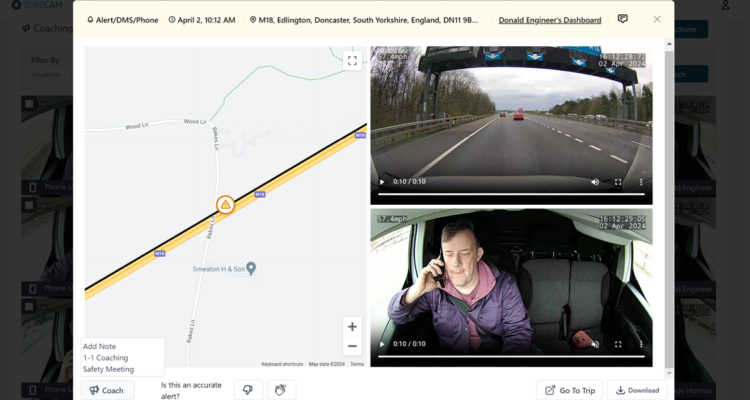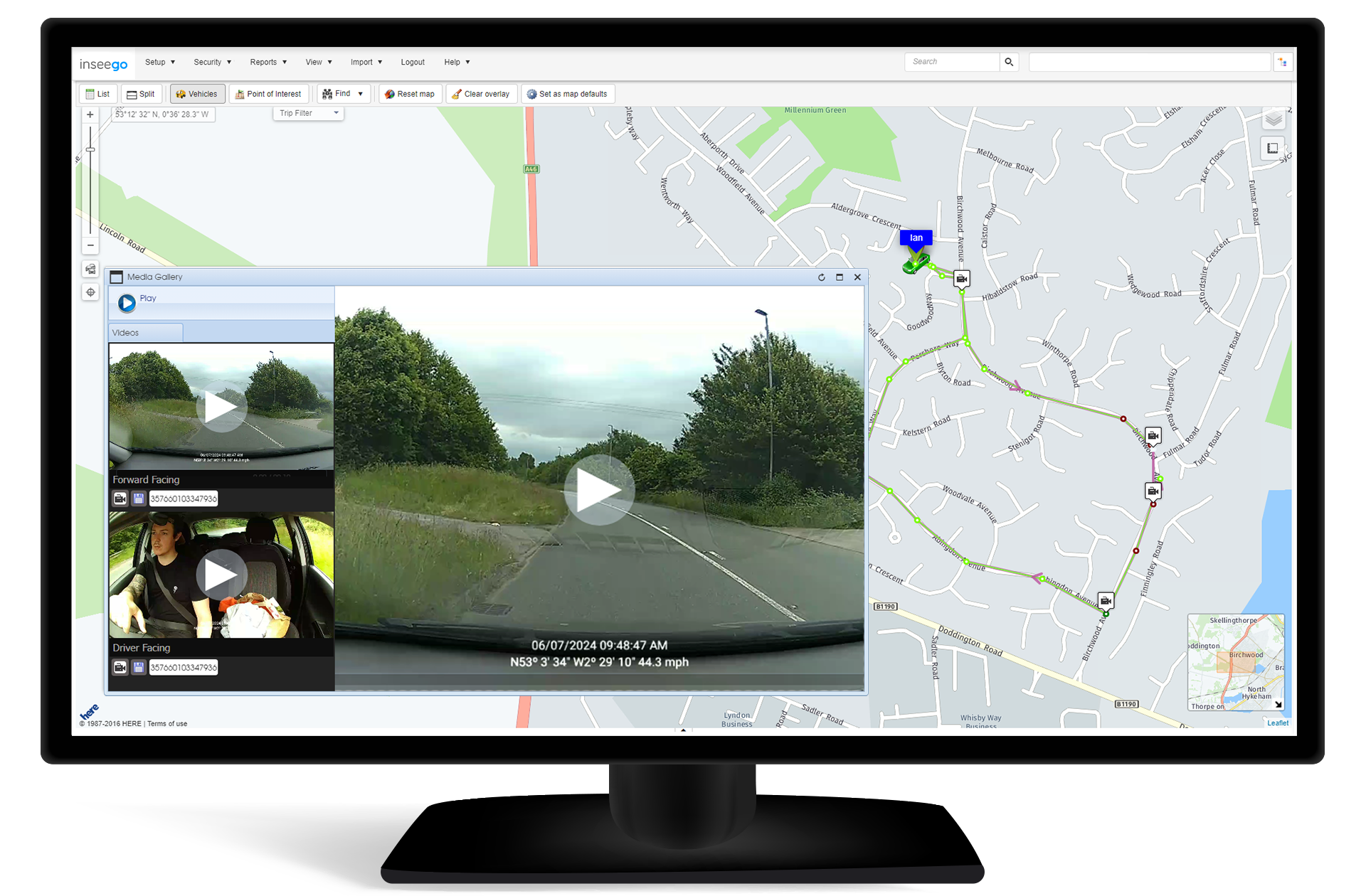Fleet and video telematics are increasingly used by fleets to achieve performance, efficiency and safety improvements, and yet, despite the many proven benefits, some wariness remains around driver privacy. What are the main concerns? How can fleets overcome any pushback from drivers and unions? And how do you ensure any resistance to change does not undermine the effectiveness of a telematics strategy?
The main privacy issues for telematics are typically around the nature and frequency of the monitoring, as well as how personal data is collected, stored and used. Tracking technology has been around for many years now and has been successfully embedded in many fleet operations. But as it has evolved into far more comprehensive fleet telematics systems, so too has the amount of driver performance data that is monitored increased.
The fear of constant surveillance certainly remains the primary concern, especially when it involves personal activities outside of work. With many of the latest telematics solutions incorporating video, this has only exacerbated the situation for some. Fears remain about the potential misuse of footage and supporting data, because personal interactions and activities can be captured alongside footage of driving behaviour.
While the benefits of telematics are clear, suspicion and mistrust amongst drivers can still be a major challenge for fleets according to Sam Footer, Partnership Director of SureCam. “Not everyone is supportive of change or greater use of technology, but the biggest pushback from drivers is normally around personal privacy. There is a common misconception that they will be watched at all times, which can undermine efforts to implement an effective telematics solution when handled badly.”
Steve Thomas, Managing Director of Ctrack UK (formerly Inseego UK), believes that in the main, people have got used to telematics. “There is a now general acceptance that there are genuine business reasons for telematics, but this does not mean that privacy is no longer an important consideration. A business private function, for example, enables a driver to mask their location and activity data when using the vehicle for personal use. It is this kind of innovation that can make a difference and provide drivers with the reassurance needed.”
However, he does offer a word of caution about business private tools: “Some of these solutions are only linked to mileage reporting and do not really offer true privacy functionality. Always ask the telematics provider about the exact levels of protection before sharing details with drivers or unions.”
Technology innovation
In recent years, telematics has focused much more on tackling fleet risk, which has seen the rapid adoption of integrated dashcams. As part of this evolution, AI cameras have been introduced to identify and address distracted driving as it happens. These devices can detect dangerous behaviours such as mobile phone use, smoking, eating, and eyes away from the road, providing immediate warnings to drivers, while fleet managers gain full visibility from the office.
AI camera devices can have a significant positive impact on road safety, but for some drivers it is a step too far and they can feel like their personal space is being invaded. For Ctrack’s Steve Thomas, its about working closely with drivers, and where required unions, to develop telematics solutions that consider and alleviate any privacy concerns. “We have adapted our AI camera to provide in-vehicle safety alerts without the device recording. This allows the device to warn the driver of any distraction, drowsiness or mobile phone usage behind the wheel, while removing a potential barrier to adoption.”
SureCam’s Footer agrees and believes that a “coach the driver first” approach can make the technology much more acceptable for those employees that are behind the wheel. “By making it less invasive, using clever telematics innovations, it is possible to eliminate unnecessary monitoring. We use audible nudges, for example, that gives drivers the chance to self-correct and maintain a clean safety record, so the fleet manager is only alerted if it becomes a recurring or serious issue.”
With the continued advances in cloud-based connectivity, there is an added opportunity to bring together different fleet-related systems to deliver a “driver-friendly” technology solution. Mark Hadley, CEO of Blackout Technologies, sees huge potential for mobile phone blocking technology combined with complementary systems such as fleet and video telematics.
“Technology integration will enable fleets to shape their telematics to achieve safety priorities, while also being sensitive to any privacy concerns. Blackout’s mobile device blocking solution can be used effectively alongside or as an alternative to a driver-facing AI camera, making it a powerful tool in the fight against illegal smartphone usage, which is believed to contribute to as many as 40% of vehicle collisions,” explains Hadley.
Developing solutions that balance business and operational needs with driver assurance can be achieved by incorporating innovative privacy features. The conversation becomes much easier if checks are in place to avoid excessive monitoring and restrict the capture of personal data.
Driver buy-in
Technology alone will never be enough to overcome all privacy issues. Engagement is crucial, whether you are adopting telematics for the first time or enhancing an existing system. “Buy-in is essential, so involving drivers and unions at an early stage is an effective way of overcoming any concerns,” suggests Vernon Bonser, UK Sales Director, Queclink Wireless Solutions. “Taking an honest and transparent approach – providing complete visibility of the data – will help them understand why the decision has been taken and what it will achieve.”
By involving drivers in the discussion about the proposed telematics solutions and their privacy concerns, allowing for feedback and collaboration. SureCam’s Footer says: “Clear communication from the start is key, making the driver part of the process and helping fleets to get the most out of their video telematics solution. You need to explain the reasons behind it being adopted and why it is a benefit to them, with ongoing engagement that gives them an opportunity to contribute.”
Moreover, it is essential to convince drivers that the purpose of the technology is non-punitive and primarily aimed at making them safer. “If drivers understand that the technology is not there to catch them out and penalise every mistake, there is likely to be greater levels of acceptance,” explains Ctrack’s Thomas.
While driver privacy remains a challenge it can be overcome when approached in a proactive, transparent and collaborative manner. By addressing concerns and gaining buy-in, fleets can build trust with their drivers and ensure that any telematics solution is implemented responsibly and effectively.








